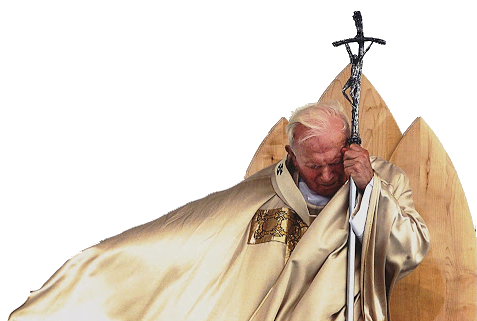
Today’s Gospel (Luke 2:22-40) says: “… they brought [Jesus] up to Jerusalem to present him to the Lord, as it is written in the law of the Lord, “Every firstborn male shall be designated as holy to the Lord.” The actual ritual is not described, but we are introduced to two elderly people who were in the Temple at the time.
The first of these was a devout man named Simeon. He had been told that he would not die until he had laid eyes on the promised Messiah. Guided by the Spirit, he came into the Temple and recognized Mary’s child as the long-awaited Messiah. He makes a prayer of thanksgiving to God for answering his prayer, “for my eyes have seen your salvation”. What he has seen is: “… a light for revelation to the gentiles and for glory to your people Israel.” Jesus, the Incarnate Word of God, is a divine revelation to the non-Jews and the glory of God’s own people from whom he came.
Mary and Joseph are quite amazed at the words being spoken. There is a lot they still do not know about their Son. Simeon then had some ominous words for Mary: “This child is destined for the falling and the rising of many in Israel and to be a sign that will be opposed so that the inner thoughts of many will be revealed—and a sword will pierce your own soul, too.”
Simeon’s words must have been very puzzling and even alarming to Mary and Joseph. This is the paradox of Jesus. He comes as Savior, bringing life for the whole world, and yet there will be people who will reject his message of truth and life. His own people will be deeply divided over him. Simeon’s words will be a source of deep pain for Mary, something she will not realize fully until she sees him die in agony before her eyes.
The second person to greet the parents and their Child was another deeply religious person. She was Anna, who: “… lived with her husband seven years after her marriage, then as a widow to the age of eighty-four.” She spent all her time in the Temple in prayer and fasting. On seeing the Child, she gave thanks to God and spoke about him to everyone she met.
In the past, when this feast was called the Purification of Our Lady, there was a custom in the Church for mothers to go through a purification ceremony after giving birth. Such a rite is now seen as unnecessary, but the revised Rituale Romanum (Roman Ritual) still provides for the blessing of women both before and after birth. The latter is only in cases where the mother could not be present at the baptism of her child. In general, it would seem highly appropriate for a special blessing to be given to mothers on this day.
The feast is now called the Presentation of Our Lord and the emphasis is more on Jesus than on his Mother. The blessing and the procession of candles, as well as the Scripture readings, focus on Jesus who is the “Light of the World”.
The First Reading (Malachi 3:1-4) consists of a prophecy that can be applied to the Messiah, and hence to Jesus. While the opening sentence reminds us of John the Baptist: “See, I am sending my messenger to prepare the way before me…”, the rest of the paragraph foreshadows today’s feast: “…the Lord whom you seek will suddenly come to his temple. The messenger of the covenant in whom you delight—indeed, he is coming, says the Lord of hosts.”
This is a clear reference to Jesus as the Word of God and the one who will inaugurate the New Covenant between God and his people. The prophecy goes on to warn that the coming Messiah will be a real challenge; he will be “like the refiner’s fire”. He will: “… purify the descendants of Levi and refine them like gold and silver, until they present offerings to the Lord in righteousness.” For those who welcome his message, and his call, Jesus is good news, but for those who will reject his call, it will mean eternal death.
The Second Reading (Hebrews 2:14-18) speaks of the meaning of God’s Son coming to live among us as one of us. This is the theme of today’s feast. The Son of God came to share our flesh and blood and all that goes with it. It was in this way that he would: “… destroy the one who has the power of death …” On the contrary, for us he has come to: “… free those who all their lives were held in slavery by the fear of death.” In order to do this, the Son: “… had to become like his brothers and sisters in every respect, so that he might become a merciful and faithful high priest in the service of God, to make a sacrifice of atonement for the sins of the people.”
On the cross, Jesus will be both Priest and Victim, the Lamb of God who takes away the sins of the world. “Because he himself was tested by what he suffered, he is able to help those who are being tested.” All of this is foreshadowed by the warnings that Simeon gives to Mary about the sword of sorrow that will pierce her heart.
May God Bless You and Grant You His Peace!

